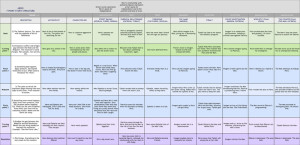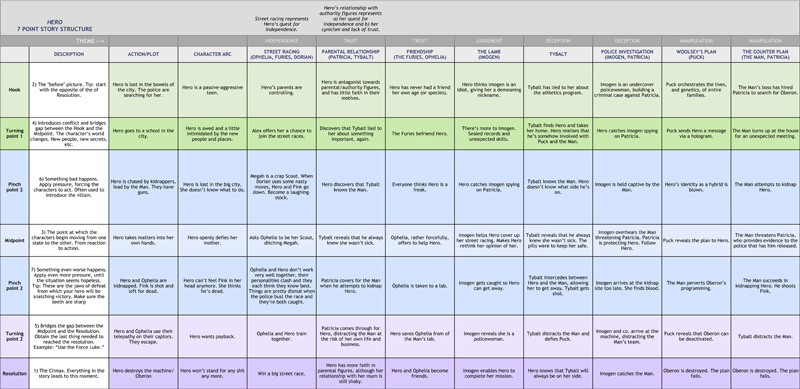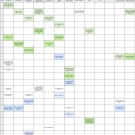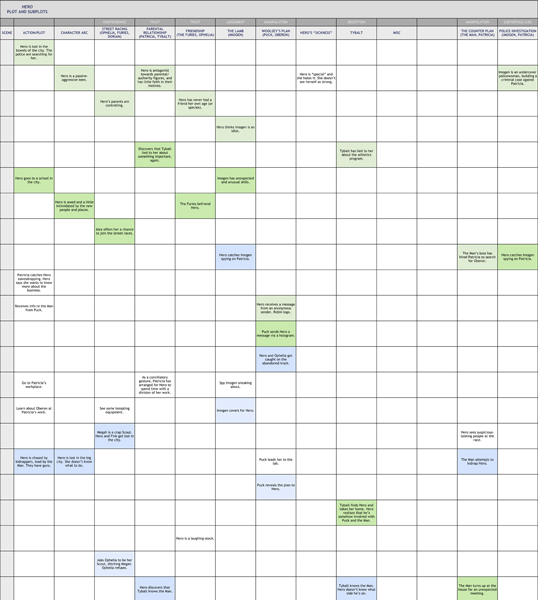Just after Christmas, I finished the first draft of Hero and since the New Year I’ve been hard at work on the second draft. Dan Wells’s 7-point plot system (aka the Pantser’s Beat Sheet) has been incredibly helpful during the revision process – particularly the layering process (explained in part 5 of Dan Wells’s lecture, available on YouTube) – and it too has undergone a revision.
Note: You’ll find a list of the helpful links referenced at the end of this post.
First draft blah
When I finished the first draft of Hero, I expected to be so excited I would dance around the living room like a maniac. There would have been fireworks (appropriate for New Year’s Eve), celebrations and a bottle of bubbly, maybe even a medal or a trophy or basket of chocolates.
Instead there was blah. It was that beige, boring kind of blah that has no word to describe its blah-ness. A direct consequence, no doubt, of it being so blah that the entire English-speaking world has forgotten to put it in the dictionary.
Why the blah? Well, it was Christmas and there were weddings to attend, turkey to eat and presents to give and maybe I was just a little over the whole first draft thing. Second and finals drafts are so much more exciting.
Revising Hero
Frankly, I don’t know why I ever thought I was a pantser. Plot is good, but trying to find it in an organic, as-you-write-it kind of fashion is an exercise in frustration. So after an initial read, in which I found more plot holes and forgotten subplots than I can poke my pen at, I turned once again to the 7-point plot system. I think it’s saved my sanity, not to mention a few months of rewriting.
Although I’ve only just started the second draft, I now have ten new chapters, five discarded chapters and a clear idea of what needs to be written in order to give Hero a good, clear plot. It may not even take me the six months I thought it would, which means I can have it out and into the world that much sooner (not to mention get started on the next book).
The Pantser’s beat sheet, revised
As by-product of the revision process, I’ve also revised my version of the 7-point Story Structure template (you can find the original here), adding a row for theme (if you’re not sure what I mean by theme, here’s a great explanation) above each of the action, character arc and subplot columns and another row for descriptions and notes to self, above that.
This time around, I’ve also included a second sheet for the layering of plots and subplots (YouTube link), which is by far the most useful part of the 7-point system.
Goodies
- 7-point Story Structure template
MS Excel





Thanks for sharing this. I found it via Caroline Norrington’s Scrivener template. You may be interested in these posts on maximizing word count productivity by Rachel Aaron:
http://www.sfwa.org/2011/12/guest-post-how-i-went-from-writing-2000-words-a-day-to-10000-words-a-day/ and
http://thisblogisaploy.blogspot.com/2011/08/12-days-of-glory.html
In the second, she includes a copy of her writing log.
All the best!
Thanks so much for sharing this.
It sounds a lot like how I’ve written and revised my first trilogy (well, I’m still revising it, actually, only the first book is done). It was a lot of trial, keep what stategy is good, discard the rest.
Now I’m planning a new series and I want to try the other way around. Instead of pantsing it out, then plan it, I want to plan it first and then pant the thing out 😉
I’ve just discovered this tecnique and I think it’s perfect for my project… if I can muster it. Let’s see. But I already know your spreadsheet will be invaluable.
Thanks so much 🙂
Hi. Where is the revised beat sheet with the second sheet (layering)? Thanks!
The second sheet is included in the file linked at the bottom of the post, the sheet titled “Plot and subplots”. I’m linking the file again here, for convenience.